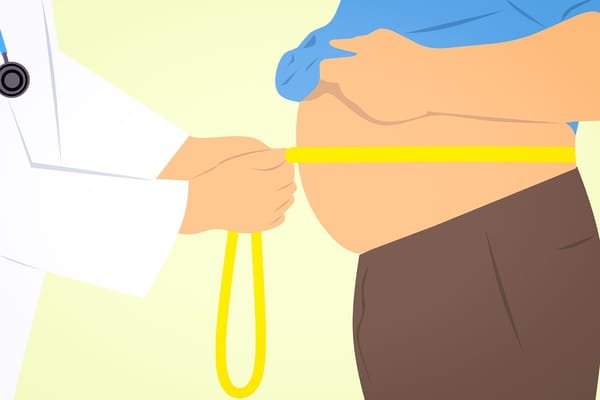Intermittent fasting has become a popular approach to weight loss and health improvement. However, many individuals encounter a plateau where progress seems to stall. This comprehensive guide will explore the intermittent fasting plateau and provide actionable strategies to overcome it.
Key Takeaways:
- Understanding the causes of an intermittent fasting plateau can help in developing strategies to overcome it.
- Adjusting the fasting and feeding windows, along with calorie intake, can reignite the weight loss process.
- Incorporating resistance training and monitoring progress with precision can aid in breaking through a plateau.
What is an Intermittent Fasting Plateau?
A plateau during intermittent fasting is a period where there is no noticeable progress in weight loss, body fat loss, or muscle building despite adhering to the fasting regimen. It's a common challenge that many individuals face after an initial period of success.

Identifying a True Plateau
Before making any changes, it's essential to determine whether you've hit a true plateau. A true plateau is typically recognized after several weeks of no change in body weight, losing fat or improvement in body composition, not just a few days of fluctuation.
The Science Behind Fasting Plateaus
When you first start intermittent fasting, the body responds to the calorie restriction by using stored fat for energy, leading to weight loss and fat loss. Over time, the body adapts to the new eating pattern, which can result in a plateau.
Metabolic Adaptation and Its Role
Metabolic adaptation is the body's natural response to calorie restriction. As you consume fewer calories or perform a low calorie diet, your body becomes more efficient at using energy, which can slow down weight loss progress.
The Impact of Hormones on Fasting
Hormones like insulin and ghrelin play significant roles in hunger and satiety. Their levels can affect your progress with intermittent fasting and contribute to a weight loss plateau.
Reassessing Your Caloric Needs
As you lose weight, your body requires fewer calories to function so you will find yourself eating fewer calories, so it's crucial to reassess your caloric needs regularly to ensure you're not consuming more than necessary.
Adjusting Your Fasting Schedule
Sometimes, changing your fasting schedule can help break a weight loss plateau. This might mean shortening or lengthening your feeding window or trying different intermittent fasting methods. You might even want to experiment with a different exercise routine.
The Role of the Feeding Window
The timing and quality of food consumed during your feeding window are just as important as the fast itself. Ensuring nutrient-dense, balanced meals can help overcome a fasting weight loss plateau and help you begin losing weight again.
Calorie Restriction vs. Nutrient Density
While calorie restriction is a key component of weight loss and losing fat, nutrient density is vital for overall health. Balancing both is essential for long-term success with intermittent fasting.

The Importance of Hydration
Staying hydrated is crucial for overall health and can support the weight loss process. Sometimes, increasing water intake can help move past a plateau.
Evaluating Your Diet Quality
Evaluating the quality of your diet and food intake is essential. Processed foods, even within calorie limits, can hinder progress. Focus on whole foods to support your fasting efforts. Whole foods like grass fed beef, pastured chicken, pastured eggs, organic grass-fed greek yogurt, organic fruits, and organic veggies are great foods to consume.
The Role of Exercise in Breaking a Plateau
Exercise, particularly resistance training, can help break through a plateau by increasing muscle mass and boosting metabolism.
Resistance Training for Muscle Building
Resistance and strength training is effective for muscle building and reducing body fat, which can increase your basal metabolic rate and can help you begin losing weight again.

Cardiovascular Exercise and Calorie Burn
Cardiovascular exercise can increase calorie burn and contribute to total body weight loss, but it should be balanced with resistance training for optimal results.
The Importance of Sleep Quality in Weight Loss
Lack of sleep can affect hormones related to hunger and satiety, potentially leading to a plateau. Prioritizing sleep and sleep quality is crucial for weight loss success. Suggestions for improvement in sleep are going to bed and waking up at the same times everyday. Staying off devices for at least 1-2 hours before bed. If you're on a device consider blue light blocking glasses. And consider supplements that can help you sleep better. Poor sleep and stress are two big factors that can stimulate weight gain.
Stress Management Techniques
Stress can lead to hormonal imbalances that affect weight loss. Incorporating stress management techniques like meditation or yoga can be beneficial and are part of an overall healthy lifestyle.
Tracking Your Progress Accurately
Accurate tracking of your progress, including body measurements and body composition, can provide insights into whether you've truly hit a plateau.

Optimizing Your Eating Window for Metabolic Flexibility
When it comes to intermittent fasting, the concept of an eating window is central to the practice.
Metabolic flexibility refers to the body's ability to efficiently switch between burning carbohydrates and fats for energy. By optimizing your eating window, you can potentially enhance this metabolic switch and push past a plateau.
For instance, gradually shortening your eating window can increase the duration of the fast, thereby intensifying the metabolic challenge and encouraging your body to adapt to healthy weight loss. This doesn't mean drastically cutting down your eating period overnight, but rather, making small, manageable adjustments to find what best stimulates your metabolism without causing undue stress.
Moreover, the timing of your eating window can be just as crucial as its duration. Aligning your eating window with your circadian rhythm, or your body's natural internal clock, can lead to improved metabolic outcomes.
Consuming your meals earlier in the day, when insulin sensitivity is higher, might help in overcoming a plateau. This practice, often referred to as early time-restricted feeding, can also aid in better blood sugar control and might enhance weight loss efforts.
Experimenting with the timing of your eating window could provide a new stimulus for those who have hit a plateau in their intermittent fasting journey.
Harnessing the Power of the Eating Window
When it comes to intermittent fasting, the concept of an "eating window" is central to the strategy. This is the designated period during which all of your day's calories are consumed. But did you know that the timing of this window can significantly influence your metabolic flexibility?
Metabolic flexibility refers to the body's ability to switch between burning carbohydrates and fats efficiently. By aligning your eating window with your body's natural circadian rhythms, you can enhance your metabolism, potentially to burn fat and improving energy levels. For instance, some studies suggest that an earlier eating window, which aligns with daylight hours, may be more beneficial for weight loss progress.

Moreover, the length of your eating hours can be just as crucial as its timing. A shorter window, such as 6-8 hours, may intensify the benefits of intermittent fasting by extending the fasting period. This can lead to greater insulin sensitivity and improved blood sugar control.
However, it's essential to listen to your body and adjust the length of your eating window to suit your individual needs and lifestyle. Some people may find a 10-hour window more sustainable and just as effective, especially when combined with a balanced diet and regular exercise. Remember, the goal is to find a rhythm that works for you and can be maintained consistently for long-term success.
Embracing the Variety Within Your Eating Window
When it comes to intermittent fasting weight loss, as we've discussed the feeding window is key. But have you considered the potential benefits of varying the contents of your meals within that window?
By introducing a diverse array of foods, you not only prevent dietary boredom but may also enhance your body's nutrient absorption and promote weight loss. A varied diet can stimulate different digestive enzymes and optimize your metabolism, potentially helping you break through a fasting plateau.
Incorporating a rainbow of organic fruits and vegetables, along with a balance of proteins, fats, and carbohydrates, ensures that your body gets a broad spectrum of vitamins, minerals, and antioxidants.
This variety can also help regulate blood sugar levels, maintain your ideal body fat, and maintain energy throughout your feeding window. Remember, it's not just about when you eat, but also what you eat that contributes to the success of your intermittent fasting journey.
Understanding the Circadian Rhythm and Your Eating Window
Have you ever considered how your body's internal clock, or circadian rhythm, influences your intermittent fasting success? Aligning your eating window with your circadian rhythm can be a game-changer.
Studies suggest that consuming your meals earlier in the day, when your metabolism is more active, may enhance losing weight and improve metabolic health. This approach leverages the times when your body is naturally more insulin sensitive, potentially increasing the benefits of your fasting regimen.
Moreover, by syncing your food intake with your circadian rhythm, you might experience improved sleep quality and energy levels. It's not just about when you eat, but also how your body processes food throughout the day.
For instance, a breakfast-focused eating window could lead to better appetite control and reduced evening cravings. This synchronization can be particularly beneficial for those who have hit a plateau, as it introduces a new variable that the body needs to adapt to, potentially kick-starting weight loss again while decreasing fat storage.
The Synergy of Fasting and Circadian Eating Windows
Expanding on the concept of circadian alignment, let's delve into how you can create synergy between your fasting protocol and your eating window. It's not just about restricting your eating to certain hours; it's about choosing those hours wisely to complement your body's natural rhythms.
For example, if you're practicing a 16:8 intermittent fasting method, consider starting your eating window within a couple of hours after waking up and ending it in the late afternoon or early evening.

This practice can lead to a more efficient fat-burning process as your body utilizes fat stores when it's primed to do so. Additionally, by avoiding late-night eating, and better eating habits you may reduce the likelihood of sleep disturbances, which are crucial for recovery and weight management.
Remember, the goal is to create a sustainable and harmonious relationship between your fasting schedule and your body's needs, which may require some experimentation to find the perfect balance for your healthy lifestyle and goals.
Timing Your Nutrients to Leverage Your Eating Window
The strategic timing of nutrients within your eating window can be a game-changer for those practicing intermittent fasting. Consuming the right nutrients at the right time can enhance your energy levels, improve sleep, improve workout performance, and even aid in recovery and muscle synthesis.
For instance, timing your intake of complex carbohydrates before a workout can provide you with sustained energy, while having protein post-workout supports muscle repair and growth or just maintaining muscle mass.
Moreover, by aligning your intake of certain macronutrients with your body's circadian rhythms, you may improve your metabolic responses. For example, research suggests that consuming more calories earlier in the day can positively influence weight loss and metabolic health. So, consider not just what you eat during your eating window, but also when you eat it, to maximize the benefits of your intermittent fasting protocol.
Strategic Eating Window Adjustments for Intermittent Fasting Plateau Prevention
Adjusting your eating window can be a powerful tool in preventing and overcoming a weight loss plateau during intermittent fasting. If you've been sticking to a strict eating window with little to no results, consider shaking things up with ways to break the plateau.
For example, if you typically eat from noon to 8 PM, try shifting your window to start earlier in the day, such as 10 AM to 6 PM. This minor adjustment can sometimes kickstart your metabolism and reignite weight loss. The change in timing can also affect your hormone levels, particularly those related to hunger and satiety, which may help you better manage your appetite and reduce overall caloric intake.
Another strategy is to vary the length of your eating window from day to day, which can prevent your body from adapting to a set routine. This approach, known as intermittent fasting with variable eating windows, can keep your metabolism guessing and may enhance fat burning. For instance, you might have a 6-hour window on one day followed by a 9-hour window the next.
This variation not only helps in preventing plateaus but also adds flexibility to your diet plan, making it easier to stick with in the long run. As always, it's important to ensure that your feeding window allows for adequate nutrient intake and aligns with your personal and professional commitments for sustainable adherence.
Incorporating Strategic Refeeds into Your Eating Window
Strategic refeeds are a method used by many to break through weight loss plateaus, and they can be particularly effective when combined with intermittent fasting. A refeed involves intentionally increasing your calorie intake for a short period, usually within your eating window, to boost leptin levels and metabolic rate.
This can be especially beneficial after a prolonged period of calorie restriction, as it signals to your body that it's not in a famine state, potentially reviving a sluggish metabolism. When planning a refeed, focus on high-quality, nutrient-dense foods, particularly those rich in carbohydrates, to maximize the leptin response and replenish glycogen stores.
It's important to approach refeeds with a structured plan to avoid overindulgence that can derail progress. Incorporating one or two refeed days into your weekly routine, within your eating window, can provide a psychological break from the rigors of dieting, as well as a physiological boost to your metabolic rate.

This strategy should be used judiciously and in alignment with your overall health and fitness goals. By doing so, you can enjoy the benefits of refeeds without compromising the principles of intermittent fasting and your long-term success.
The Role of Body Composition Monitoring
Monitoring body composition and body measurements, not just body weight, can reveal changes in fat mass and muscle mass, providing a clearer picture of your progress.
Adjusting Your Macros
Adjusting your macronutrient intake, such as increasing protein or altering the ratio of carbs and fats, can impact weight loss and help overcome a plateau.
Intermittent Fasting and Autophagy
Autophagy is a process that occurs during fasting, where cells remove and recycle damaged components. It's associated with several health benefits but may not directly affect weight loss.
The Psychological Aspect of Plateaus
Mental and emotional factors can play a role in a plateau. Maintaining motivation and a positive mindset is important for long-term success.
Setting Realistic Expectations
Setting realistic expectations for weight loss and muscle building can prevent discouragement when progress slows down.
The Importance of Consistency
Consistency in your intermittent fasting routine is key to overcoming a plateau. Regularly sticking to your schedule can yield long-term results.
When to Consider Professional Guidance
If you're struggling to break through a plateau, consider seeking guidance from a healthcare professional or a registered dietitian.
Exploring Advanced Fasting Protocols
For those experienced with intermittent fasting, exploring advanced protocols like alternate-day fasting or extended fasts may help break a plateau.
The Role of Cheat Days
Incorporating occasional cheat days or refeed days can sometimes reset hormones and metabolism, aiding in overcoming a plateau.
Intermittent Fasting and Longevity
While weight loss and muscle building are common goals, intermittent fasting is also associated with longevity and reduced risk of chronic diseases.
The Connection Between Fasting and Gut Health
Intermittent fasting can impact gut health, which in turn can affect metabolism and weight loss. Maintaining a healthy gut microbiome is beneficial.
The Influence of Genetics on Fasting Success
Genetics can influence how your body responds to intermittent fasting and weight loss strategies. Personalized approaches may be necessary.
Combining Intermittent Fasting with Other Diets
Combining intermittent fasting with other dietary approaches, like the ketogenic diet or Mediterranean diet, can sometimes provide a synergistic effect.
The Role of Supplements in Overcoming a Plateau
Certain supplements may support weight loss and muscle building efforts during intermittent fasting, but they should be used judiciously.

Intermittent Fasting and Women's Health
Women may need to approach intermittent fasting differently due to hormonal fluctuations. Tailoring the fasting regimen can be crucial.
The Importance of a Supportive Community
Having a supportive community or accountability partner can help you stay on track and push through challenging periods like a plateau.
Celebrating Non-Scale Victories
Focusing on non-scale victories, such as improved energy levels or better fitting clothes, can provide motivation beyond the number on the scale.
The Role of Mindful Eating
Practicing mindful eating during your feeding window can enhance satiety and prevent overeating, which is beneficial for overcoming a plateau.
Summary
An intermittent fasting plateau can be a frustrating experience, but it's a common part of the weight loss journey. By understanding the causes and implementing strategies such as adjusting your fasting schedule, reassessing caloric needs, incorporating resistance training, and ensuring quality sleep, you can break through the plateau and continue making progress.
Remember to track your progress accurately, adjust your expectations, and seek professional guidance if needed. With consistency and a positive mindset, you can overcome the challenges of a plateau and achieve your health and fitness goals.
FAQ Section
Q: How long does it typically take to hit an intermittent fasting plateau? A: The timing of an intermittent fasting plateau varies for each individual. It often occurs after an initial period of noticeable progress, which can be a few weeks to several months into the fasting regimen.
Q: Can I still build muscle while intermittent fasting if I've hit a plateau? A: Yes, you can still build muscle during intermittent fasting, even if you've hit a weight loss plateau. Incorporating resistance training and ensuring adequate protein intake are key strategies.
Q: Should I stop intermittent fasting if I've reached a plateau? A: Not necessarily. A plateau can be a temporary phase. Before discontinuing intermittent fasting, try adjusting your approach using the strategies discussed in this article. If you're still not seeing progress, consult with a healthcare professional for personalized advice.









